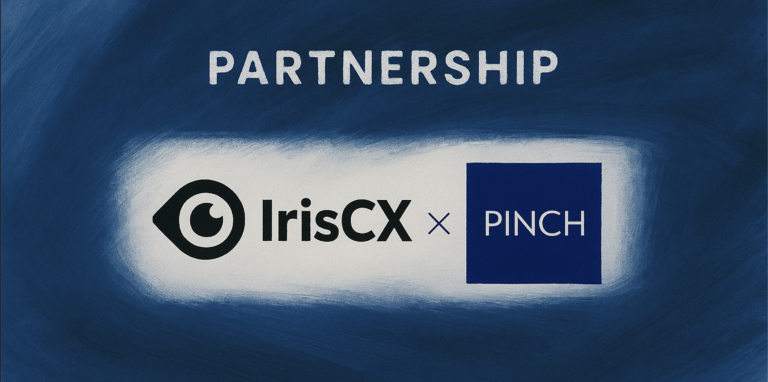(Updated Feb 19. 2024)
In the evolving landscape of homebuilding, standing out in a crowded market hinges on more than just the quality of your constructions. It’s the experiences you craft for your customers, from the initial handshake to the final walkthrough, that can elevate your brand and cement your reputation.
Builders have traditionally taken a referral approach with an ops execution; the challenge with that model is that the outomes are not connected to the activity, and when that is the case, it is very easy to cut to the bone.
So while your CX might produce referrals that might influence a sale; a bad CX program with certainly block a sale & cost you more to run.
Knowing when to refine and revitalize these experiences is paramount. This guide will help you recognizing those critical moments and charts a path toward remarkable improvement, lower costs & faster revenue.(here is a good starter post to think about your role in this change: https://www.iriscx.com/blog/elevating-customer-experience-in-homebuilding-a-role-specific-guide)
Understanding Customer Experience in Homebuilding
Customer experience in homebuilding is the sum of all interactions between your company and your clients. It’s a comprehensive journey that goes beyond mere transactions, encapsulating every touchpoint, including marketing, sales, design consultations, construction updates, and post-sale follow-ups.
Unlike customer service, which solves immediate issues, customer experience is about crafting a consistently positive, seamless journey that builds trust, loyalty, and advocacy, laying the groundwork for sustained business success.This post is going to focus on the work you can do on the Post-Sale experience.
Early Warning Signs
The first step toward improvement is recognizing the need for it. Look out for these signs:
Leading Indicators:
These are signals you can measure and affect; you can measure these more often and early in the experience so you can build sustainabile change.
Increased Time to Respond, Extended Time to Action, Prolonged Time to Close: Efficiency in response and action reflects your commitment to customer satisfaction. Delays can erode trust and satisfaction. Audit your processes to identify bottlenecks and implement streamlined procedures. Find the data you will need to build consensus & momemtum around cahnge.
Decrease in Customer Pulse scores: Customer pulse scores are brief surveys at key homebuilding milestones that provides immediate insights into client satisfaction. This method, focusing on 1 or 2 critical questions like the Net Promoter Score (NPS), enables real-time adjustments to enhance the customer experience. Simple and quick, these surveys ensure actionable feedback without overwhelming respondents.
Lagging Indicators:
These are singnals that take longer to measure & affect, they are connected to the desired outcome and are usually the summary of a number of leading indicator events.
Decrease in Customer Satisfaction Scores: Implement a systematic approach to collecting and analyzing customer feedback. Use surveys, follow-up calls, and online reviews as tools to gauge satisfaction. A downward trend in these scores often precedes a deeper dive into specific areas of concern. Remember this takes customer effort, so be intentful about these activities.
Negative Reviews and Feedback: In the digital age, online platforms amplify customer voices. Regular monitoring of these channels can provide early warnings about specific areas needing attention. Constructive criticism is invaluable for continuous improvement. Look deeper than twitter etc, get into Reddit, etc.
Decreased Referrals: Referrals are the lifeblood of the homebuilding industry. A noticeable decline could indicate dissatisfaction among your customer base. Engage with past clients to understand their hesitations and turn these insights into action. Consider breaking down your customer journey to difference referrable stages.
Key Areas to Address
Elevating your customer experience involves focusing on several pivotal areas:
Communication: Establish clear, open lines of communication. Regular updates and easy accessibility can alleviate anxieties and build trust throughout the homebuilding process.
Transparency and Honesty: Set and manage expectations realistically from the outset. Clear discussions about timelines, budgets, and potential challenges can prevent dissatisfaction and build a foundation of trust.
After-Sales Support: A relationship doesn’t end at the sale; it evolves. Offering robust after-sales support, including warranties, maintenance advice, and responsive service calls, reinforces a commitment to quality and customer satisfaction.
Personalization: Recognize and respect the individuality of each client. Tailoring the experience to their unique preferences and needs demonstrates your dedication to their vision, enhancing satisfaction and loyalty.
Implementing Changes
Transforming your customer experience requires strategic actions:
1. Gather and Analyze Feedback: Create a structured mechanism for collecting detailed customer feedback at various stages of the homebuilding process. Use this data to identify patterns and areas for improvement.
2. Gather Cross-Functional Support: Customer Care crosses operations and marketing; you need both stakeholders as co-champions. Foster a culture of collaboration by involving all departments in customer experience initiatives. This ensures a unified approach and leverages diverse insights for comprehensive improvements.
3. Align on Metrics: Define clear metrics (e.g., response times, satisfaction scores) to measure the impact of your initiatives. Regularly review these metrics to track progress and adjust strategies as needed. If you have laggy data, you will risk having the program de-funded.
4. Map out your customer Journey: Mapping out the customer journey is a crucial step for homebuilders looking to enhance their customer experience. Create a detailed visualization of every interaction a homeowner has with your brand, from initial awareness through to post-purchase. By understanding the customer journey, you can gain organizational support, & identify key moments of friction where improvements can be made to ensure a seamless, positive experience. (We have another post on that coming)
5. Set a Timeline: Develop a realistic timeline for implementing changes, with milestones for quick wins and long-term goals. This helps maintain momentum and demonstrates commitment to continuous improvement.
6. Leverage Technology: Utilize technology to enhance efficiency and communication. Project management tools, customer relationship management (CRM) systems, and mobile apps can facilitate smoother interactions and keep clients informed. Balance your choices by considering the effort requried by your team AND your customer.
Measuring Success
Success in customer experience is measurable. Set explicit goals that balance leading and lagging indicators,and use metrics like Net Promoter Score (NPS), customer satisfaction (CSAT) pulse, and Customer Effort (CE). Celebrate successes and learn from setbacks, always with an eye toward refinement and growth.
Case Studies and Success Stories
Incorporate narratives of homebuilders who have revolutionized their customer experience. These stories not only inspire but also illustrate the tangible benefits of prioritizing customer-centric strategies, from increased referrals to higher satisfaction rates.
Elevating your customer experience is not just about addressing current challenges—it’s about anticipating future needs and exceeding expectations. It’s a strategic investment in the sustainability and growth of your homebuilding business. By staying attuned to the early warning signs and committing to continuous improvement, you can ensure that your brand not only survives but thrives in the competitive homebuilding landscape.
Now is the time to take a closer look at your customer experience. Assess, strategize, and act. For more insights, guidance, or support, reach out to our team!




